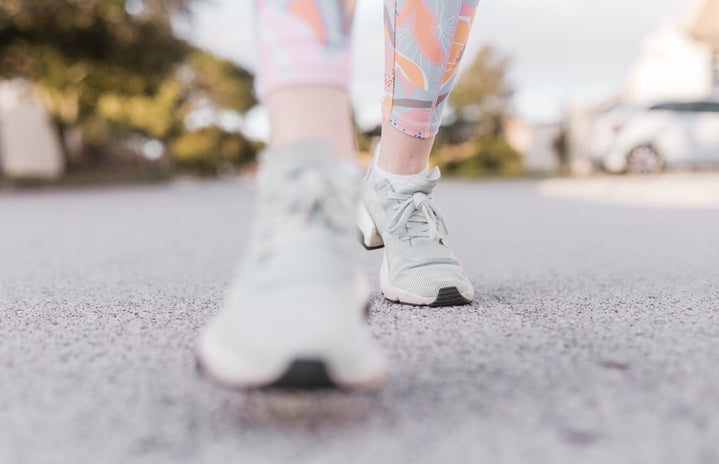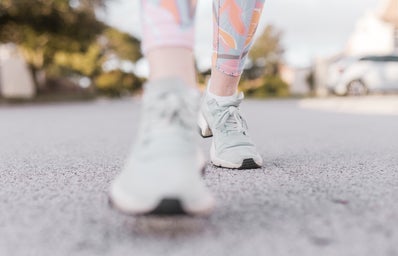I think people underestimate the power of the iconic “Hot Girl Walk.” If you live under a rock and have never heard this phrase before, the hot girl walk is a time for mindfulness. A time for yourself to reflect in a meaningful manner. The girlbossification of walking. Just wait. By the end of reading this, you are going to be truly obsessed too.
As we know, social media knows no bounds. One thing goes viral. Everyone sees it. In 2021, during quarantine, the hot girl walk was born. Girls all over were encouraged to put on their cutest Alo workout set and strut their stuff while exercising. At this point, you may be thinking, how do I look “hot” while walking? That’s not what this is about. The hot girl walk is a time where you need to FEEL hot. While the term “hot girl” may make some people feel excluded, this trend can come off as contradictory. I think when the term “hot girl” is used, you have to find what feeling hot means to you and incorporate positive thinking into your life. The trend was coined by TikTok user Mia Lind. She said, “A lot of people are thinking that the hot girl walk is about weight loss, but it’s not. The biggest transformations are the ones that start internally.”
The hot girl walk has two primary functions: (1) relieving stress and feeling better about yourself and (2) providing a time for reflection. If I’m going to be honest, I’m not the most avid exerciser. I have a hard time figuring out activities to exercise that I enjoy. One thing I like about this trendy walk is that it uses a psychological strategy called habit pairing. The idea of this is that rather than procrastinating and holding off on pursuing our goals, you exercise while doing something that you enjoy. For those who are also not-so-avid exercisers, this is perfect because you are taking a seemingly negative task and putting it in a positive light. This changes the way your brain thinks and you’re more likely to stick to the new behaviors (Clear, 2018).
Whether you are listening to your favorite podcast or your favorite music while walking, you are taking time for yourself. Studies have shown that brisk walks can help lead to long-term health benefits, like improvements in cardiovascular risk factors like weight management and blood pressure reduction (Zheng et al., 2009). Other studies have shown that by walking, you are improving your mental health by reducing anxiety and improving self-esteem (Sharma et al., 2006). Walking also increases blood circulation to the brain, improving self-efficacy and focus (Guszkowska, 2004). In fact, people who walk an hour three times a week showed more stimulation in their decision-making areas of the brain (Hsu et al., 2018). Walks also increase creativity in that people think of new ideas more often when they are outside walking. Additionally, being outside helps with our circadian rhythms. The sunlight helps to regulate our internal body clock to help wake you up and feel more energized. Walks in the morning help accomplish this. However, walks in the afternoon can also be great resets or to wind your day down.
So, this is your sign to get outside and go on your “hot girl” walk. Think about your goals, what you are grateful for, and how much you have accomplished. It’s a meditative experience for anybody and there is absolutely no problem with taking baby steps towards walking daily. The experience is what you make of it, and you are in charge of how you take action. Mental health therapist Laurie Groh said, “I walk every day and listen to a book, and I’ve noticed a huge difference in the last two years, especially with the pandemic closing us in. I don’t just talk the talk, I walk the walk.”
References
Clear, J. (2018). How to Build New Habits by Taking Advantage of Old Ones. In Atomic Habits. https://jamesclear.com/habit-stacking#:~:text=By%20linking%20your%20new%20habits,by%20chaining%20small%20habits%20together.
Guszkowska, M. (2004). Effects of exercise on anxiety, depression and mood. Psychiatria Polska, 611–620.
Hsu, C. L., Best, J., Wang, S., Voss, M., Eng, J. J., Nagamatsu, L., Davis, J., Boyd, L., Liu-Ambrose, T., & Hsiung, G. R. (2018). Aerobic exercise promotes executive functions and impacts functional neural activity among older adults with vascular cognitive impairment. British Journal of Sports Medicine, 184–191.
Sharma, A., Madaan, V., & Petty, F. (2006). Exercise for Mental Health. Primary Care Companion to the Journal of Clinical Psychiatry, 106. https://doi.org/10.4088%2Fpcc.v08n0208a
Zheng, H., Orsini, N., Amin, J., Ehrlich, F., Wolk, A., & Nyguen, V. T. T. (2009). Quantifying the dose-response of walking in reducing coronary heart disease risk: Meta-analysis. European Journal of Epidemiology. https://doi.org/10.1007/s10654-009-9328-9


